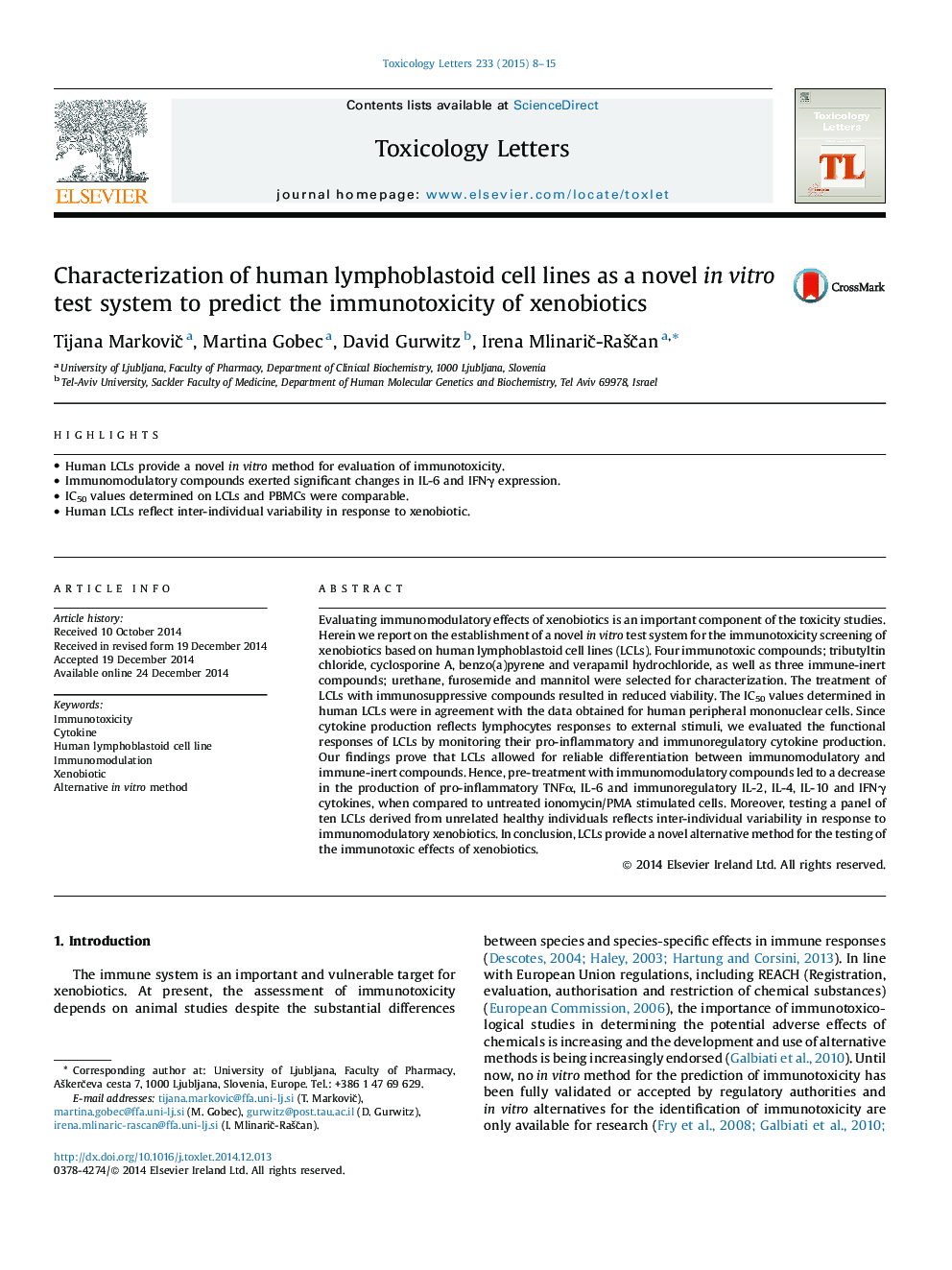| Article ID | Journal | Published Year | Pages | File Type |
|---|---|---|---|---|
| 2598901 | Toxicology Letters | 2015 | 8 Pages |
•Human LCLs provide a novel in vitro method for evaluation of immunotoxicity.•Immunomodulatory compounds exerted significant changes in IL-6 and IFNγ expression.•IC50 values determined on LCLs and PBMCs were comparable.•Human LCLs reflect inter-individual variability in response to xenobiotic.
Evaluating immunomodulatory effects of xenobiotics is an important component of the toxicity studies. Herein we report on the establishment of a novel invitro test system for the immunotoxicity screening of xenobiotics based on human lymphoblastoid cell lines (LCLs). Four immunotoxic compounds; tributyltin chloride, cyclosporine A, benzo(a)pyrene and verapamil hydrochloride, as well as three immune-inert compounds; urethane, furosemide and mannitol were selected for characterization. The treatment of LCLs with immunosuppressive compounds resulted in reduced viability. The IC50 values determined in human LCLs were in agreement with the data obtained for human peripheral mononuclear cells. Since cytokine production reflects lymphocytes responses to external stimuli, we evaluated the functional responses of LCLs by monitoring their pro-inflammatory and immunoregulatory cytokine production. Our findings prove that LCLs allowed for reliable differentiation between immunomodulatory and immune-inert compounds. Hence, pre-treatment with immunomodulatory compounds led to a decrease in the production of pro-inflammatory TNFα, IL-6 and immunoregulatory IL-2, IL-4, IL-10 and IFNγ cytokines, when compared to untreated ionomycin/PMA stimulated cells. Moreover, testing a panel of ten LCLs derived from unrelated healthy individuals reflects inter-individual variability in response to immunomodulatory xenobiotics. In conclusion, LCLs provide a novel alternative method for the testing of the immunotoxic effects of xenobiotics.
